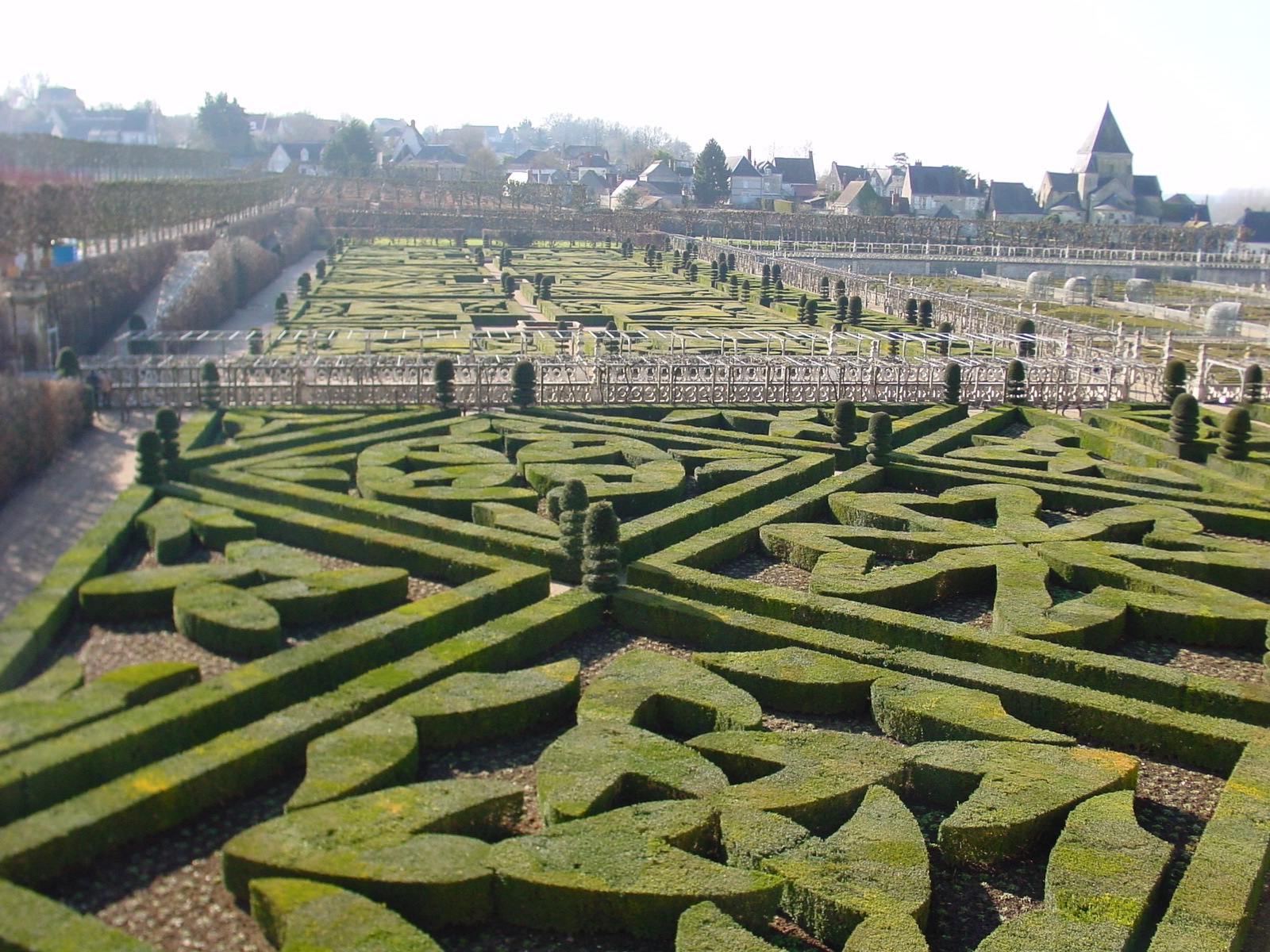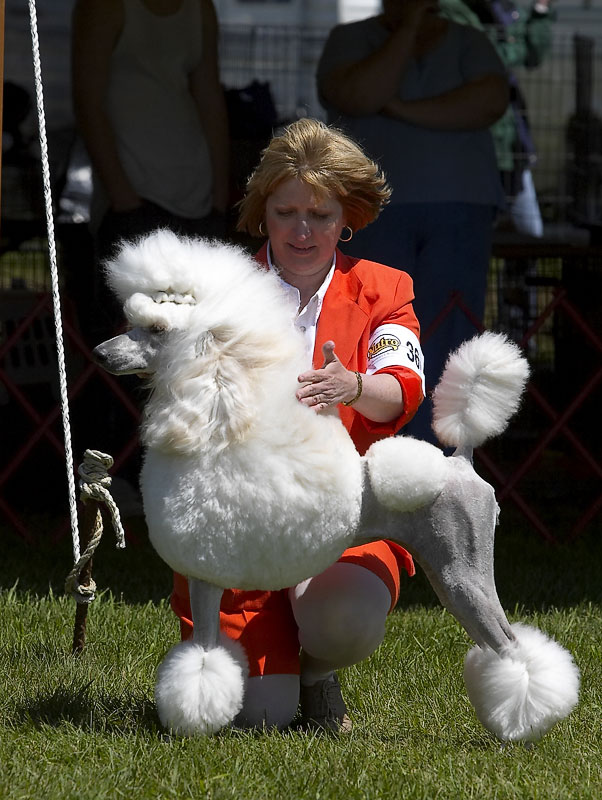What is Biomedia?
Or: Notes on Mules, Irises and other Modified Organisms
GARNET HERTZ - 03 OCTOBER 2005
Purpose: This page is meant to lead a discussion in response to Thacker's "What is Biomedia?", and to consider breeding, non-traditional forms of animal use as potential forms of "biomedia".
The mule: biomedia?

A mule is an offspring from a male donkey and a female horse. (And maybe a breeder to help the process along.)
Topiaries

Traditional topiary fills the squares of the parterre at the Chateau de Villandry, France
(Source: Wikipedia)
Dogs, Grooming and Companion Species

Poodle at American Kennel Club Ladies Dog Club of New England, May 29 2004
(Source: www.lesleymattuchio.com/Ladies.html)
Eduardo Kac on the history of rabbits

The Grey Rabbit, from John James Audubon's Viviparous
Quadrupeds of North America,1845-1848. (from Eduardo
Kac's GFP Bunny Project Statement)
"It is also important to point out that the "GFP Bunny" project breaks no social rule: humans have determined the evolution of rabbits for at least 1400 years."
(Eduardo Kac's GFP Bunny Project Statement)
George Gessert

Hybrid 488
Hybridized 1990, first bloom 1994
George Gessert
"I began as a painter. The transition to plant breeding was through painting on Japanese papers, which absorb water and pigments in unpredictable ways. I became fascinated by how ink spots grow on unprepared papers. Watching them grow, and helping them along, I no longer felt like a lone artist, but connected to creative energies that already reside in materials and in the world. From ink spots to plant breeding was only a small step. Plants, like ink spots, generate themselves. My job is to facilitate."
- Artist statement from Paradise Now (http://www.geneart.org/gessert.htm)
Ken Rinaldo: Delicate Balance


(Source: accad.osu.edu/~rinaldo/works/delicate/delic2.html)
Christoph Ebener, Frank Fietzek, Uli Winters: Hamster

Hamster - symbiotic exchange of hoarded energy
(Source: http://www.f-fietzek.de/works/hamster/)
Our project aims to establish a symbiosis between a population of hamsters and a group of vehicles with intelligent steering units. For the experiment we are using common golden hamsters. We have chosen a mostly female group to prevent territorial aggression. For the exhibition the hamsters day/night cycle will be reversed to allow spectators to see things happen during the day. The vehicles Each of the vehicles is driven forward by a built-in hamster running wheel. the vehicle is activated whenever a hamster enters it and starts running. Without a hamster inside the vehicles are totally immobile. The micro controller on each vehicle can distinguish light from dark via built in light detectors and uses this information to control its steering system. Mounted on its surface each vehicle has a solar panel to collect electricity and store it in its batteries.
- Project statement (http://www.f-fietzek.de/works/hamster/description.html)
Remo Campopiano, Guy Marsden and Jonathan Schull: Eight Bit Ant Farm

Eight-Bit Ant Farm, 2002
(Source: http://remo.net/art/installations/eight-bit_ant_farm.htm)
A camera in the ceiling and a camera in the ant cube samples the changes in the gallery and the ant colony. The activities of ants and the activities of people combine and interact to control the illumination of 64 ping pong balls, the bouncing of 64 more ping pong balls, and a computer display reflected and refracted in a hall of mirrors.
Adam Zaretsky: Workhorse Zoo

(Source: http://ncca-kaliningrad.ru/biomediale/img/adamcolor9_1.jpg)
"In Adam Zaretsky's WorkHorse Zoo, a biological performance art
piece shown recently in Salina, Kansas, the exhibit's animals were
encouraged to eat each other. Aided by fellow artist Julia Reodica, Mr.
Zaretsky spent the week living in an 8-foot-square clean room. His
bunkmates were eight of the workhorse organisms of molecular
biology: Arabidopsis thaliana (mustard plant), Saccharomyces
cerevisiae (yeast), Caenorhabditis elegans (roundworm), Danio rerio
(zebra fish), Drosophila melanogaster (vinegar fly), Escherichia coli
(bacteria), Mus musculus (mice), and Xenopus laevis (African clawed
frog)."
- Bio-artist Adam Zaretsky
sleeps with the fishes:
Using nature to create art. By Wendy Wolfson (emutagen.com/downloads/adamzaretsky.pdf)
Discussion: What is Biomedia?
- Is a mule biomedia? Why or why not?
- "Continuum" vs. "Break"
- Is Thacker's concept of biomedia computationally-biased? (Posthumanist-discourse-biased? New-genre-biased?)
Note: none of these images are the property of Garnet Hertz. All images used without any permission of any sort. Sorry. This page does not propose to present a well-crafted argument on the definition of biomedia. That is forthcoming (by me), I think.









